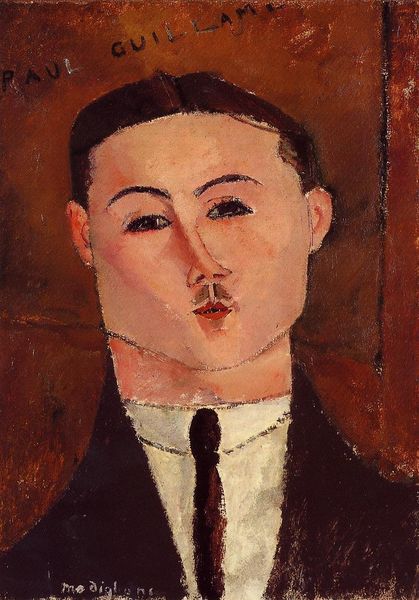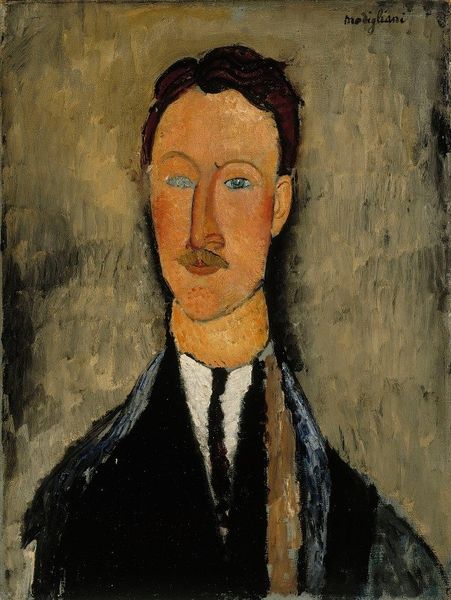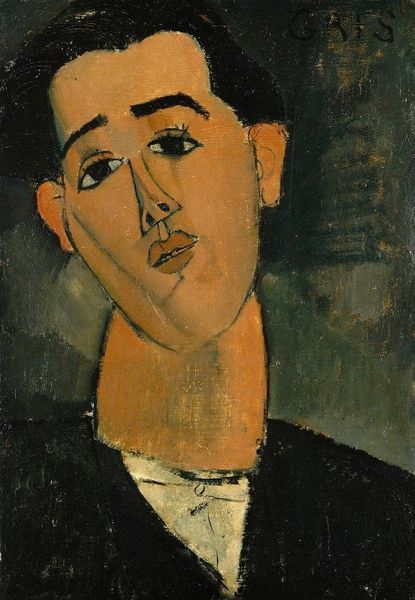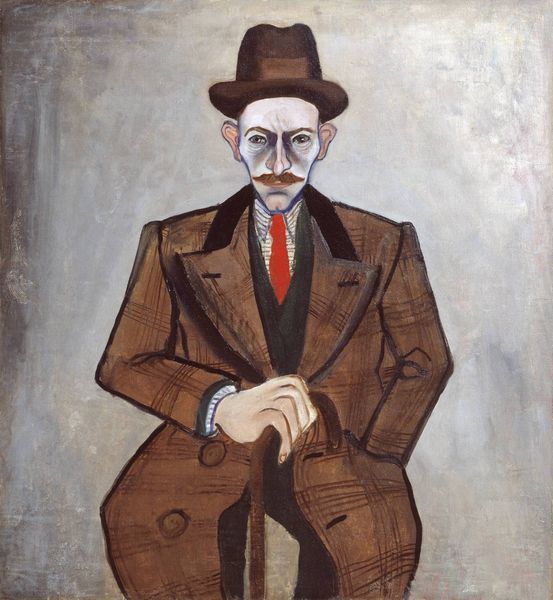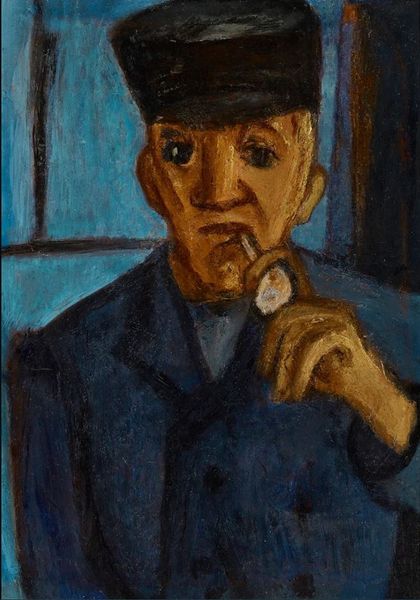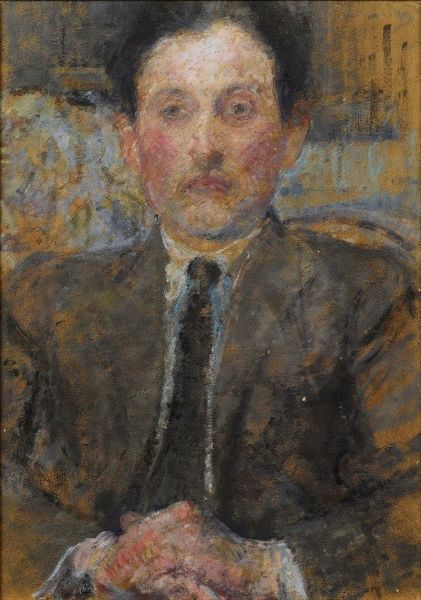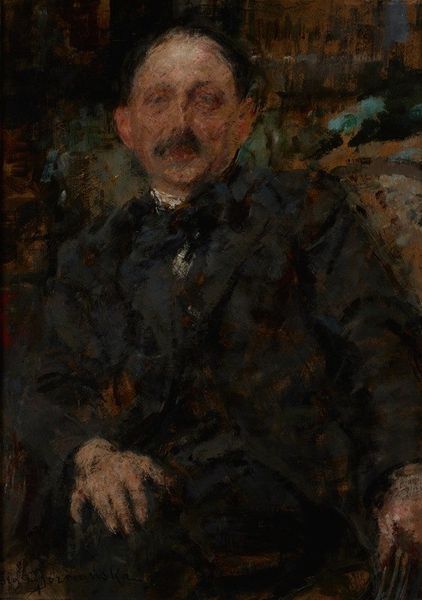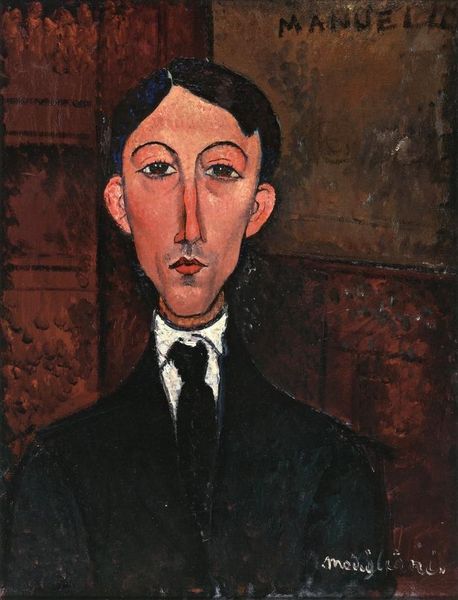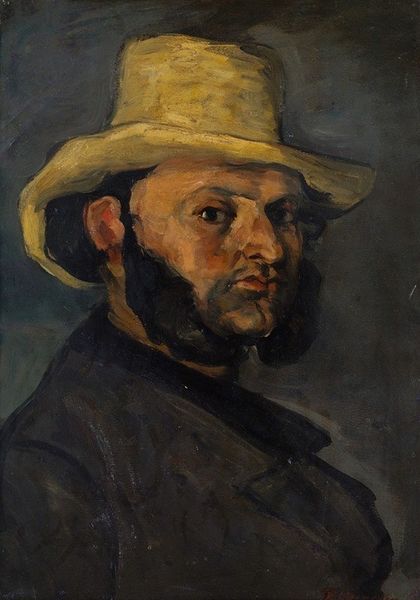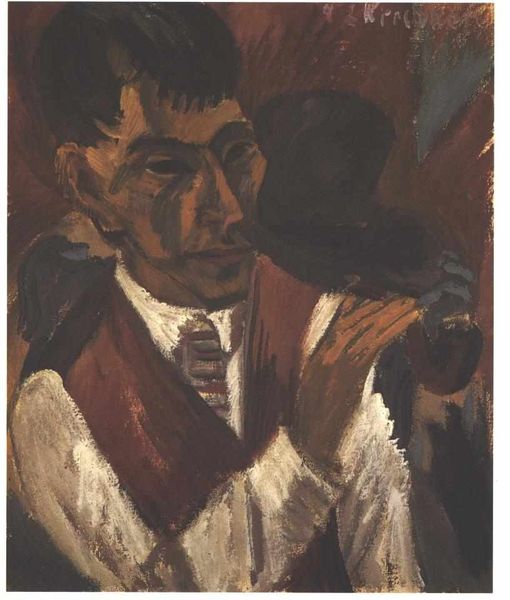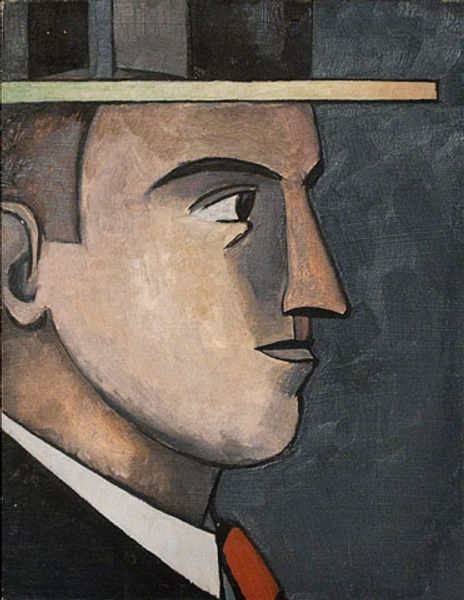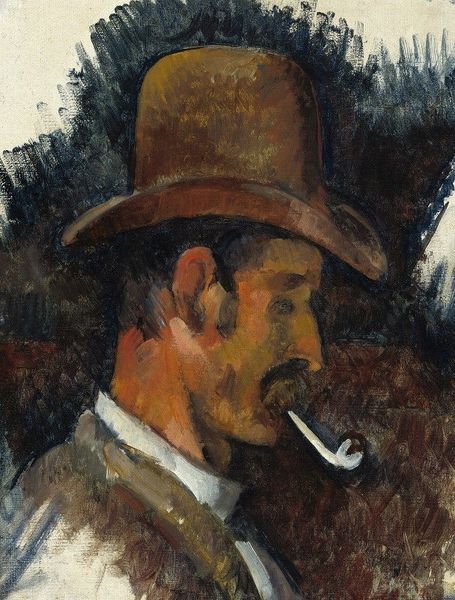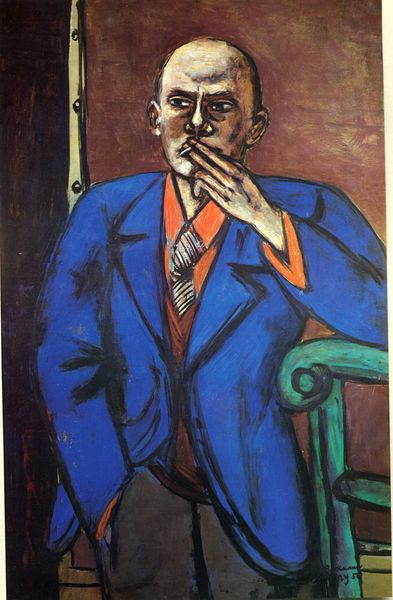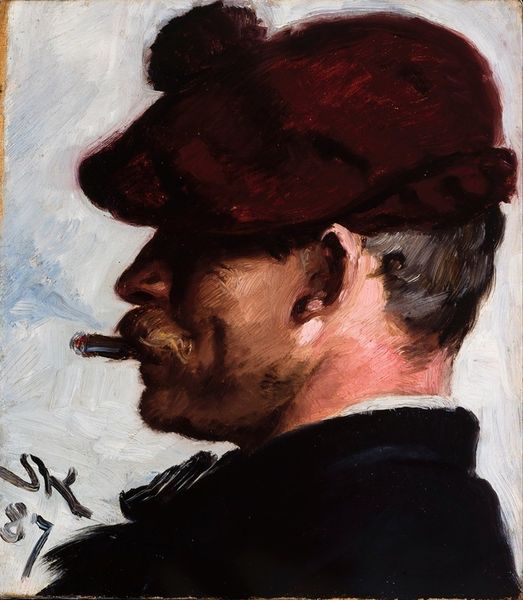
painting, oil-paint
#
figurative
#
art-nouveau
#
painting
#
oil-paint
#
figuration
#
oil painting
#
expressionism
Copyright: Public Domain: Artvee
Curator: Alright, let’s spend some time gazing at Amedeo Modigliani’s 1915 portrait of Paul Guillaume, a key figure in the Parisian art scene. It's oil on canvas and titled “Paul Guillaume, Novo Pilota”. What grabs you first? Editor: The face. It's so mask-like. Almost archaic, with those simplified features and intense, unwavering eyes. Like an icon gazing out through time. Curator: Absolutely, it has this stylized quality that borders on the surreal. Guillaume was Modigliani’s art dealer, so this portrait almost feels like a symbol of their professional relationship, as if Modigliani sees him not just as a person, but as this "new pilot", this modern navigator of the art world. It is in the lower left corner and barely visible, though. Editor: The pilot reference intrigues me, too. What symbolic weight would that have carried in 1915, amidst the throes of the First World War? Aviation was the bleeding edge. Is Guillaume meant to be a visionary guiding them all? And the blank eyes...almost feels like he can see beyond this worldly realm into what is happening on the horizon. Curator: I’m compelled to think that you’re right on the horizon idea. The hat also casts a shadow over his eyes. As if concealing him or alluding to a shadow or an aura. Also, let us consider this figure's influence on collecting. Editor: And this reminds me of an Egyptian pharaoh in his afterlife. The composition reminds us about the collective, cultural memory that goes beyond portraiture. Also, look at the geometric simplification—that Art Nouveau influence is unmistakable. It lends a stylized, almost flattened dimension. The eyes especially, feel eternal and all seeing like an icon's. Curator: Exactly, his interpretation of facial structure is like he chisels away the extraneous details, giving us only what’s essential, his almost direct line between the artist's soul and the canvas. Editor: Looking at it more, I think, there's a fascinating ambiguity here. Is this supposed to be an honest representation, or something more archetypal? This might suggest it could represent anyone in society at the time, or at least how they saw themselves. It is so much more complex than meets the eye. It is as though he is suspended somewhere between our realm and eternity. Curator: You put that beautifully! It's like Modigliani wanted us to see Guillaume not as a man, but as an idea, a cultural force almost elevated to something beyond mortal understanding, or sight. Editor: It certainly provides an opening into realms beyond appearances, even a century after its creation.
Comments
No comments
Be the first to comment and join the conversation on the ultimate creative platform.
